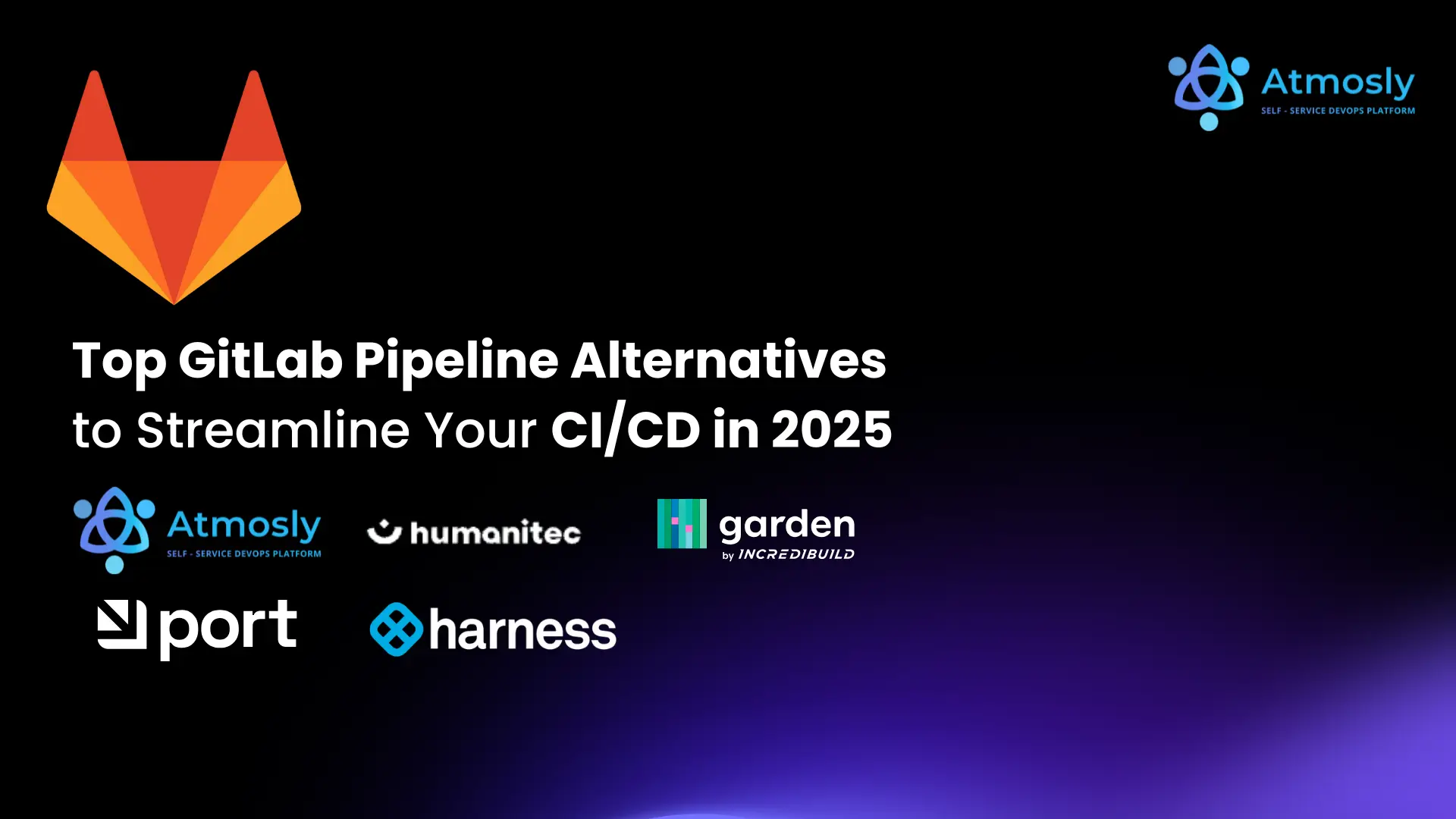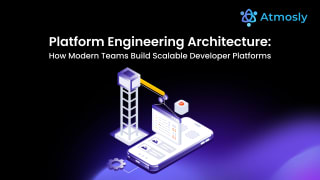GitLab CI/CD pipelines are widely used to automate code deployments and testing. But as engineering teams scale and workflows grow more complex, GitLab’s tightly coupled, YAML-driven pipelines can become rigid and difficult to manage.
From delayed releases to fragmented tooling and secrets management headaches teams are increasingly seeking tools that offer more flexibility, better developer experience, and deeper automation.
In this article, we explore the top GitLab pipeline alternatives purpose-built for modern CI/CD. Whether you're a DevOps engineer, platform team, or startup scaling fast, these tools offer powerful alternatives to unlock speed, security, and self-service.
1. Atmosly
Best for: GitOps-native CI/CD, self-service environments, and platform engineering enablement.
Atmosly is a modern DevOps automation platform designed to help teams ship faster through declarative, secure, and scalable infrastructure workflows.
Unlike GitLab pipelines, Atmosly supports reusable pipeline templates, ephemeral environments, and built-in secrets management making it ideal for teams building internal developer platforms or scaling deployments across multiple clouds.
Key Features:
- GitOps-native CI/CD pipelines with drift detection and rollback
- Ephemeral and persistent environment provisioning
- Built-in secrets management with RBAC and policy control
- Developer-friendly UX with prebuilt golden path templates
- Supports GitHub, GitLab, Bitbucket as code sources
Why choose Atmosly over GitLab Pipelines:
- Declarative automation without YAML sprawl
- Ready-to-use environments and secrets, built-in
- Designed for platform teams and developer self-service
2. Humanitec
Best for: Enterprise teams building large-scale internal developer platforms.
Humanitec provides a platform orchestration layer that abstracts infrastructure complexity from developers. It allows platform teams to define dynamic configuration management policies and automate environment creation across multiple services.
Key Features:
- Workload orchestration and dynamic environment management
- Internal developer platform support via APIs
- Deep integrations with CI/CD tools and infrastructure providers
- Developer self-service through UI or CLI
Why choose Humanitec over GitLab Pipelines:
- Fine-grained control over runtime configuration
- Environment as a service via clean APIs
- Enterprise-grade governance and policy automation
3. Port
Best for: Building developer portals and visual workflows for platform orchestration.
Port enables teams to build custom developer portals that abstract complex infrastructure processes into intuitive, UI-driven workflows. Instead of managing GitLab pipeline scripts, developers can trigger deployments and provisioning from a clean dashboard.
Key Features:
- Blueprint modeling of infrastructure and software components
- Workflow automation across infrastructure and CI/CD
- GitOps-compatible and IDP-focused
- Custom UI and access control for self-service
Why choose Port over GitLab Pipelines:
- Visual interfaces instead of complex YAMLs
- End-to-end developer experience management
- Full control over platform metadata and automation triggers
4. Harness
Best for: CI/CD pipelines with built-in governance, security, and performance visibility.
Harness offers an end-to-end software delivery platform with built-in CI/CD, canary deployments, security gates, cost visibility, and automated rollbacks providing much more control than traditional GitLab pipelines.
Key Features:
- Progressive delivery (canary, blue-green, feature flags)
- Continuous verification with observability integrations
- Policy management and governance tooling
- Cloud cost optimization across environments
Why choose Harness over GitLab Pipelines:
- More advanced release strategies
- Enterprise-level controls for security and cost
- Integrated monitoring and rollback workflows
5. Garden
Best for: Kubernetes-first CI/CD workflows with smart orchestration for dev/test pipelines.
Garden is a developer-centric DevOps tool built to speed up the inner loop of testing and deployments in Kubernetes environments. It orchestrates services, tests, and infrastructure as part of a unified workflow.
Key Features:
- Modular configuration of environments and pipelines
- Fast dev/test feedback loops for microservices
- Smart dependency graph to optimize task execution
- Kubernetes-native workflows with local-first support
Why choose Garden over GitLab Pipelines:
- Designed for fast Kubernetes iterations
- Better testing workflows for microservices
- Developer-centric with minimal setup
Conclusion
GitLab pipelines are powerful but not always the most flexible or developer-friendly option for growing teams.
Whether you’re building a full-fledged internal developer platform, looking to automate GitOps deployments, or need a better way to manage environments and secrets these GitLab pipeline alternatives offer real-world advantages in terms of speed, security, and scalability.
| Tool | Ideal For |
|---|---|
| Atmosly | GitOps pipelines, platform engineering, IDP |
| Humanitec | Enterprise orchestration and infra abstraction |
| Port | Developer portals and workflow visualization |
| Harness | Governance-heavy CI/CD with progressive delivery |
| Garden | Kubernetes-native testing and microservice pipelines |
Ready to Move Beyond GitLab Pipelines?
Atmosly is built for modern DevOps teams looking to simplify CI/CD, provision environments instantly, and enable developer self-service all in a secure, GitOps-native framework.






